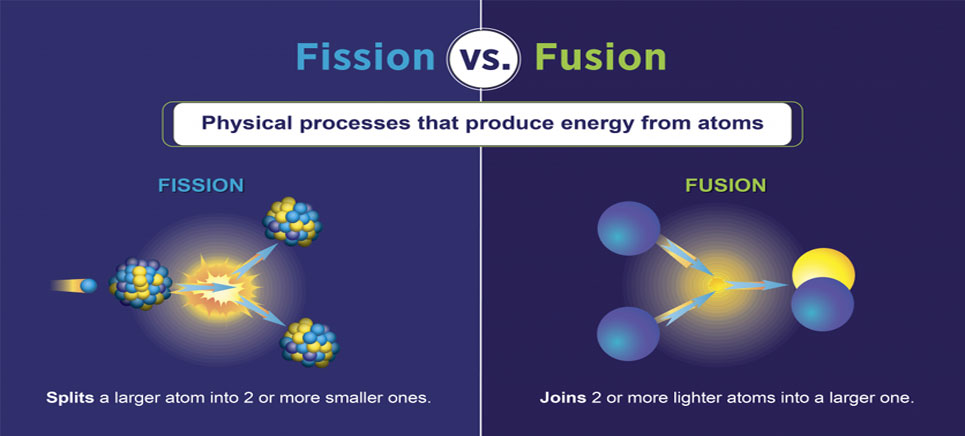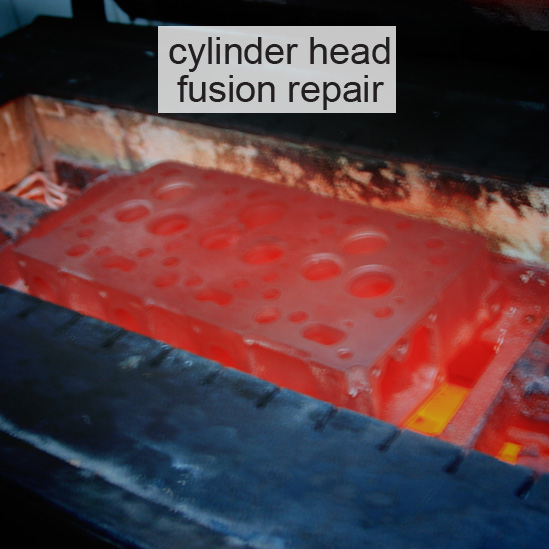

Atomic power plants and the Atom Bomb use fission

Fusion producesĮnergy by fusing together light nuclei like hydrogen to make more massive Uranium into less massive nuclei like helium and lead. They both transform the nucleus of anįission produces energy by breaking up massive nuclei Nuclear power is the only thing left to power the Sun for as long as it has been Nuclear Fusion Needs Extreme Temperatures and Densities The fact that the Sun could not last long enough being powered by gravitationalĬontraction that motivated the search for nuclear power sources. Minds about the age of the Sun (and Earth) as radioactive dating indicated aĤ.6 billion year age for the solar system and, therefore, the Sun. Eventually, physicists had to change their A good article on the age-of-the-Earth debate is in ScientificĪmerican August 1989 pages 90 to 96. Nagging but ever louder criticism of the biologists who needed more time forĮvolution to occur and the geologists who preferred the idea of an unlimited ageįor the Earth but would stomach something like a few billion years for the age This gravitational energy (with an efficiency of 1/10000 of one percent)Ĭould power the sun for 30 million years-a nice long time except for the Until the beginning of this century, this was the idea physicists strongly argued for. In addition to the expected heating, the gas would also radiate light. The gas would be compressed and, therefore, would heat up. Would happen to the layers of the Sun if they were to fall inward toward theĬenter of the Sun. The rock getsĮnergy because it is moving. The stored energy is released as you let it fall. Ground it has stored energy (``potential energy''-it has the potential to do How about gravitational settling? This is a fancy way of referring to theĬonverting of the potential energy of the falling layers to kinetic energy. Gravitational Contraction Doesn't Power the Sun Long Enough Stay the same and protons are extremely stable-they do not spontaneously This because the number of heavy particles (protons + neutrons) in the Sun must How about the ultimate inĮfficiency-a complete matter to energy conversion with 100% efficiency.Ĭould power the Sun for 10 13 years. We need a reaction with a higher efficiency. The amount of oxygen is much less than the hydrogen, so the chemical reactions Sense, yes? If the Sun could use all of its hydrogen to make water, theĬhemical reactions would only power the Sun for about 18,000 years. Lifetime = energy stored/consumption rate = E stored/Luminosity. Would last is the amount of energy stored divided by the rate of withdrawal: You need to find out how much energy the Sun has stored in its accountĪnd know how fast it makes withdrawals on its account. The amount of energy the Sun has stored = the efficiency × (the mass of ``mass'' is the total mass of all of the atoms involved and c is the speed of light. The efficiency = amount of energy released/(mass× c 2), where Reaction has a very small ``efficiency'' (something like 1/66000000 of one percent).
Instant egg head fusion vs fission plus#
Two hydrogen atoms and one oxygen atom to make a water molecule plus some energy. How about chemical reactions? The most efficient chemical reaction is combining What could produce that much energy every second? Let's first rule out other likely Of those large power plants would put out every year-that's over two billion! Our largest power plants now can produce around 5,000 Megawatts of power.Īnother way to look at this is that the sun puts out every second the same

It is equal toĨ × 10 16 of the largest power plants (nuclear or hydroelectric) Such a large number is beyond most of our comprehension, so let's put How much? TheĪnswer from our measurements is 4 × 10 26 watts. The first basic question about the Sun is how bright is it? It puts What distinguishes the correctĮxplanation from the other models is how long it can power the Sun. Mind-boggling! There are several ways to generate theĪmount of energy coming from the Sun. Do not feel bad if you have trouble grasping the amount. The first part of this section will try to give you an idea of how much energy Known for a long time that the Sun produces a tremendous amount of energy.

So long? This section will cover how stars produce their energy. How does it or any other star produce so much energy for The Sun produces a lot of light every second and it has been doing that forīillions of years. Video lecture for this page This material (including images) is copyrighted!. The Sun and Stellar Structure The Sun's Power Source Chapter index in this window


 0 kommentar(er)
0 kommentar(er)
